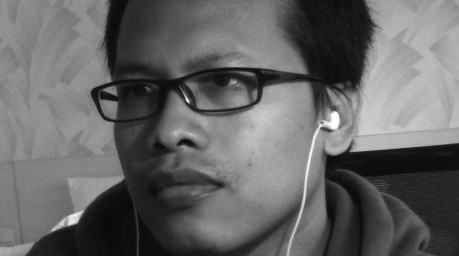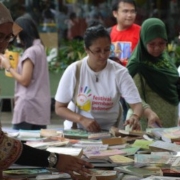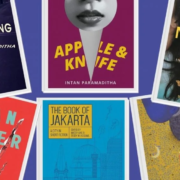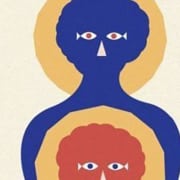Indonesian author Eka Kurniawan has been hailed as the successor to Pramoedya Ananta Toer. His 2002 novel, Cantik Itu Luka, has been superbly translated into English by Annie Tucker and was launched in Australia last week by Text Publishing. Beauty Is a Wound tells the story of a prostitute, Dewi Ayu, who rises from the grave after being dead for 21 years. The book follows Dewi Ayu and her four daughters, traversing Indonesia’s history from the colonial period, through the Japanese occupation, to the independence era. Incorporating elements of Indonesian folklore and magic, it is at times violent and sexually explicit, and quite often hilarious. You can read an excerpt from the novel here. Indonesia at Melbourne spoke to Eka before his appearance at the Melbourne Writers Festival on 28 August.
Beauty is a Wound is an epic novel, spanning the dying days of Dutch colonialism, the Japanese occupation, the 1965 violence and the New Order period. How do you describe the book?
Actually, when I wrote the book, I wanted to write a ghost story. You know from the first paragraph, it is clear that it is a ghost story. But as I wrote the book, it developed further, and it became a ghost story with a historical background.
Which authors have had the most influence on your writing?
The biggest influences on my work have been Indonesian writers, like Pramoedya Ananta Toer, Asmaran S Kho Ping Hoo [an author of cerita silat, or martial arts stories] and Abdullah Harahap [a horror author]. But I also read a lot of work from outside Indonesia, which of course has influenced my work, from authors such as Gabriel Garcia Marquez, Salman Rushdie, and Toni Morrison.
You are often compared to Rushdie and Marquez. Were you consciously deploying magical realism as a device in Beauty Is a Wound?
When I was younger I read their books with the intention of learning from those writers but now I just read them because I love to read them. Of course, there are many elements in my work that I have borrowed from magical realism but at the same time I have mixed them with local influences, like martial arts novels, horror stories and pulp fiction.
You have spoken of the importance of the grotesque in literature. There are certainly many grotesque elements in Beauty Is a Wound – bestiality, and coprophagia, for example.
The use of the grotesque is a distinctive characteristic of Indonesian folklore and art. I think it’s a kind of strategy to subvert the establishment. The stories in the wayang [puppet theatre] tradition, for example, are epics, and if the characters are not from the Brahmin caste then they’re Kesatria. But in the Indonesian tradition we also have these grotesque characters, like Semar or Petruk, which are a counterweight to the elite. There is this balance between the handsome and the ugly. We also see this in other folklore in Indonesia, for example, the Sundanese have the stories of Si Kabayan. This is a strategy for culture, for literature, to be more equitable and not only owned by the elites.
Beauty Is a Wound contains some pretty dark material but at the same time it is very funny. Would you say that this is also a typically Indonesian approach?
That was definitely intentional, to have this humorous tone. It was something that I studied from wayang performances. In wayang the theme is always serious. The scale of the stories – the Maharabhata, the Ramayana – is always epic. There is a moral message to the work but the puppeteer always tells the story with humour, with joy. This really influenced me, and I tried to adopt this technique in writing my novel. I wanted to tell a story that is dark, that is epic, that raises lots of ethical questions, but tell it in a way that is light, and full of humour.
You often use conversation to introduce humour in the novel but otherwise there is not much dialogue in Beauty Is a Wound.
In the past I had real difficulty writing conversation, I think because of the Indonesian language. Maybe it is because Indonesian is so young. It is evolving so quickly, it is so malleable and easily influenced by regional languages like Javanese and Sundanese, or by foreign languages. Novels that were written in the 1980s appear so different to novels written now. If you look at a novel written in English even a hundred years ago, it is not going to be that different to English novels written now. There is this huge inequality in Indonesian between what we write, which is relatively more ordered, and everyday language that we use to speak to one another, which is developing at an extraordinary rate. When we try to write this dialogue down, it’s really tricky because the difference is so great. Overcoming this problem is a major challenge for Indonesian writers. When I wrote this novel and Lelaki Harimau (Man Tiger), I tried to play it safe, and didn’t use much direct speech. It wasn’t until my third novel that I was confident enough to play with conversation. In my third novel I overcame the problem by playing around with grammar so the conversation sounded more natural.
Can you describe your relationship with your translator, Annie Tucker? Is it her interpretation of your work?
I wouldn’t say we’re extremely close but we were in constant communication through the translation process. At the start she sent me a sample of one chapter and I felt that she was able to capture my dark humour. After I saw the first chapter I agreed, and allowed her to continue. But after she finished each chapter she would send it to me to be reviewed and sometimes there were things that she misinterpreted a little. My contribution was mainly correcting these minor misinterpretations. But for the most part I think Annie did a great job of “creating” my novel in English.
It has been 13 years since the book was released in Indonesian. You must have changed as a writer during that time. Were you tempted to change anything?
I wasn’t tempted. I’m not really interested in revisiting things that I have written in the past. Of course, if I wrote it again now, it would be a different book. But a book is a historical product. I think it is important that I leave what I wrote in 2002 in that time. When Annie was translating and I was reviewing her interpretation, I tried to keep an objective distance. I tried to think: “What did I mean when I wrote this in 2002?”
Have English-language readers of your books responded differently to readers in Indonesia?
I actually find that Indonesian readers are far more critical. There have been a few sections that Indonesians found to be too vulgar. Even though the translation is very faithful to the original text, maybe those scenes don’t sound as vulgar in English as they do in Indonesian.
Who of your contemporaries do you admire or recommend?
There are many great Indonesian authors, such as Gunawan Maryanto, Intan Paramaditha, Ugoran Prasad, and Azhari, an Acehnese author. They are very talented writers, and are doing really interesting things. In Indonesia they are already quite popular, just not that well known outside of the country.
Why do you think Indonesian literature is so underrepresented on the world stage?
I think there are two possible reasons. The first is that Indonesian language and literature is still so young – it was only made the official language in 1945. Literature written in Bahasa Indonesia or Bahasa Melayu (Malay) is no older than 100 years. The second reason is socio-political. I think one of the main reasons that Indonesian literature declined is that in 1965 so many intellectuals were massacred or imprisoned. Before then we had talented writers like Chairil Anwar or Pramoedya Ananta Toer.
And Indonesians are not known for being big readers – a book is considered a bestseller when it has sold just 30,000-50,000 copies a year.
I think that does play a role. Even though the literacy rate is really high, over 93 per cent, when Indonesians read, they don’t read books. Culturally, yes, we do need to be pushed to read more. But at the same time, the infrastructure has to be there. Bookshops and libraries are only located in the main cities. In Jakarta there are so many bookshops but if we go just a short distance out of the major cities, to Sukabumi, for example, there are no bookshops, there is not even a library. I actually believe the interest is there. People do seem to be interested in reading those mass-entertainment type novels but if we want to read and there is no bookshop or library, we are not going to read.
You are from Tasikmalaya, also a small city. How did you become interested in literature?
I am not sure exactly how my interest in literature started. I lived in Tasikmalaya, and then in Pangandaran, about two or three hours away, which is even smaller than Tasikmalaya, so there were almost no books at all. There was a small community reading centre (taman bacaan) and there were a few mass-entertainment type books, like martial arts stories, horror stories, romance, the kind of books that if you were caught reading by your teacher your would get in trouble. If there were Indonesian translations, they were usually Barbara Cartland, or Nick Carter spy novels, the kind of books that have no moral meaning, no educational value. I read them because I loved reading and I would read whatever I could get my hands on. It wasn’t until I moved to Yogyakarta for university that I started to read the works of “important” writers that I would find in the library. At first I didn’t even realise that I was reading the canons of world literature, but I just found them, read them, and loved them. I got a bit of a shock when I met friends who knew all about literature. While I was a student I studied a lot from my friends, from the library, and then learned about the map of world literature.
